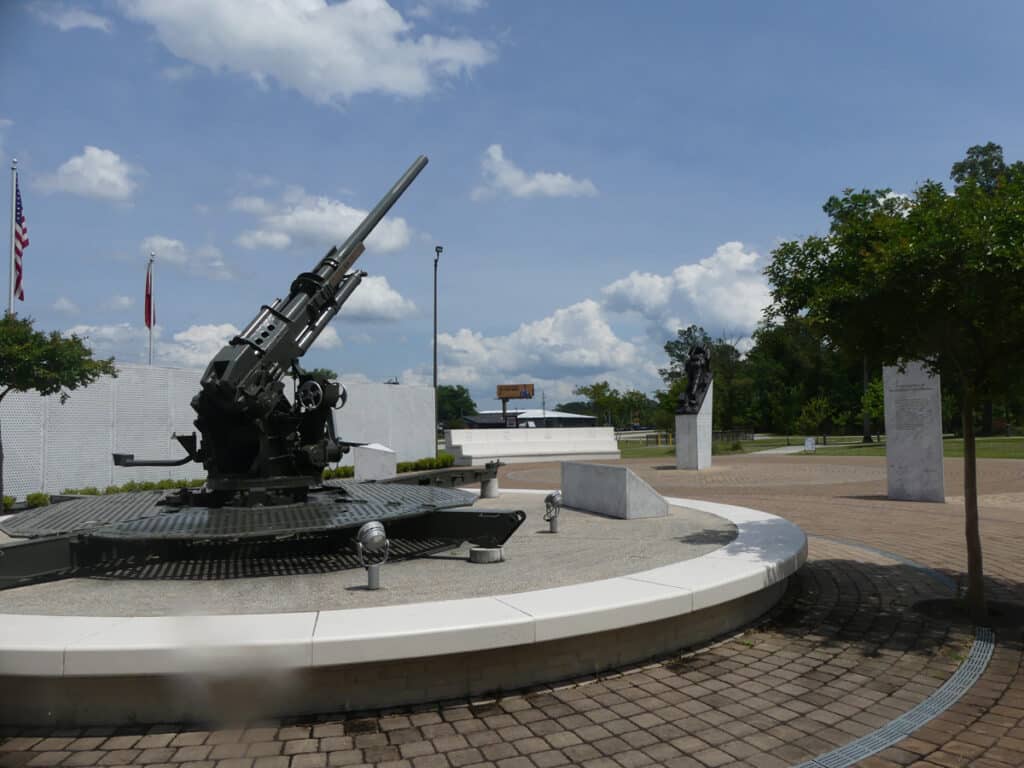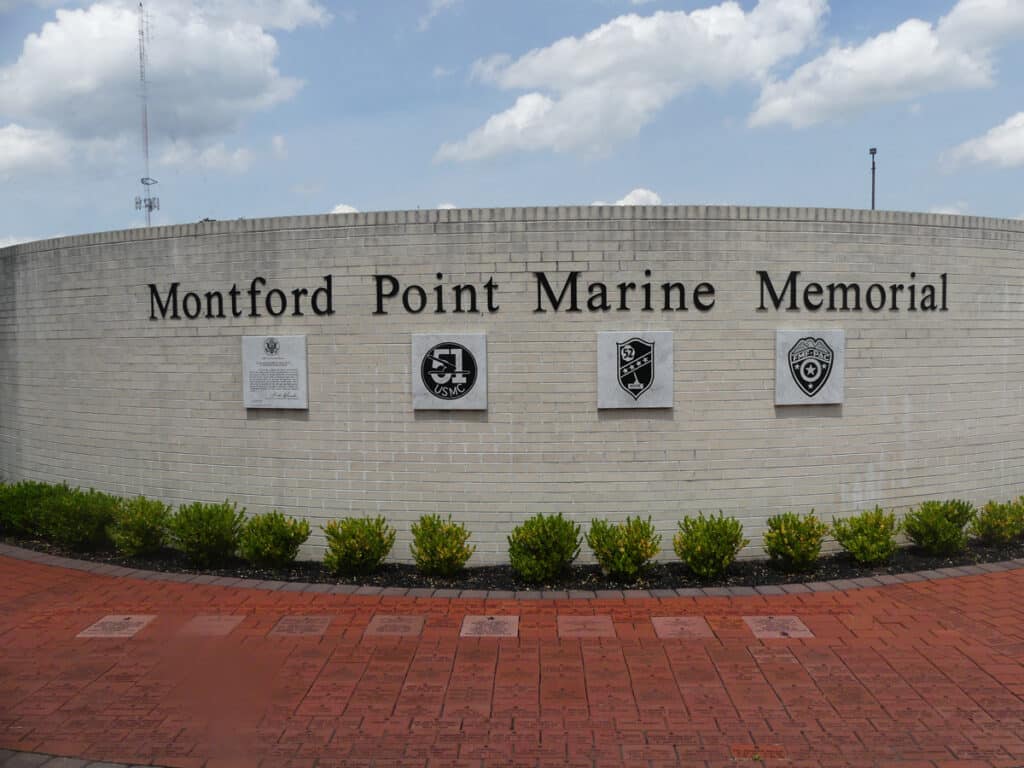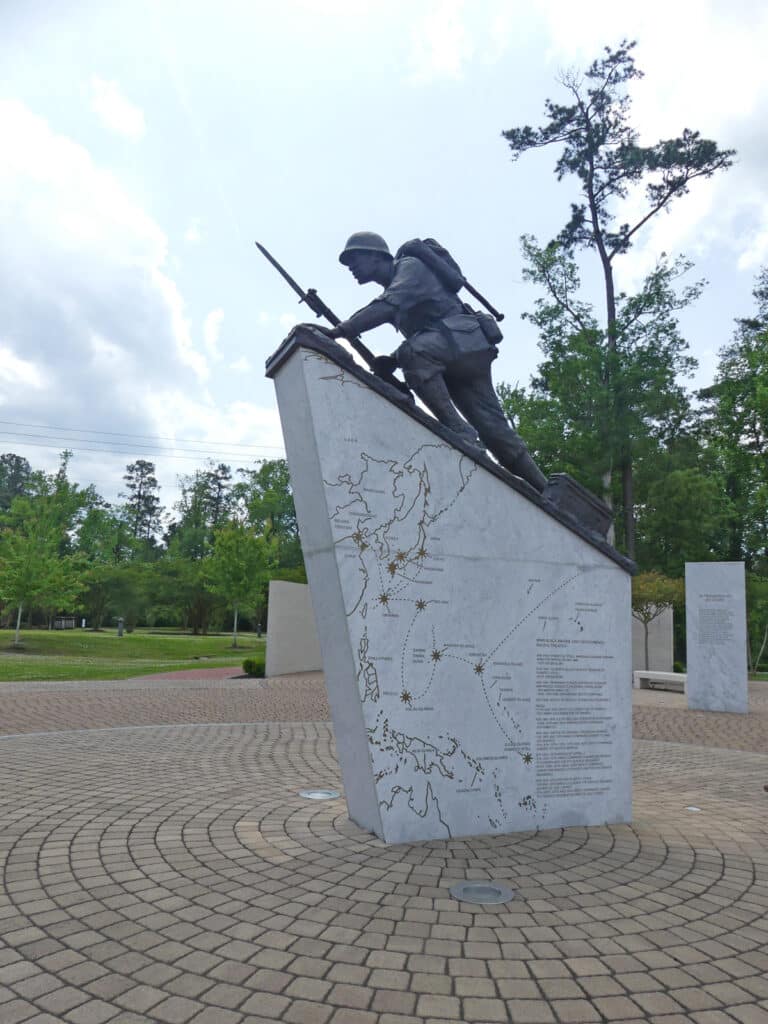Lejeune Memorial Gardens: It’s History and Influence
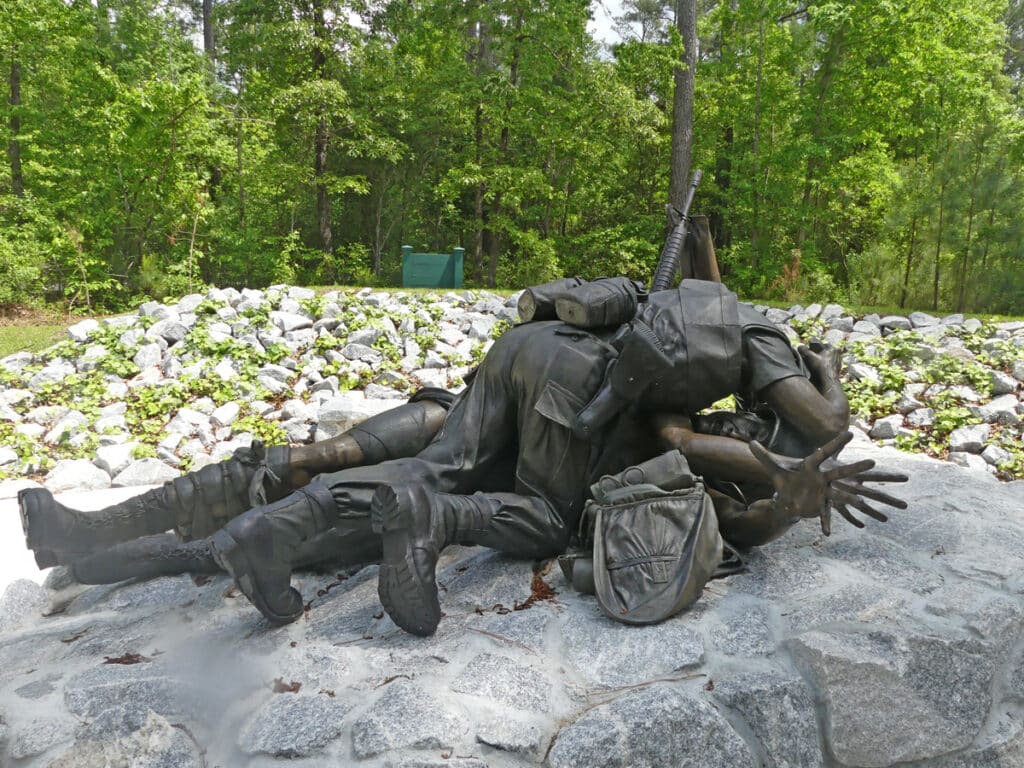
When Camp Lejeune Marine Base came to Jacksonville, North Carolina, it changed the entire county. Lejeune Memorial Gardens in Jacksonville, North Carolina was built to honor and remember all those who have served in the United States military in America’s recent wars. Each of its memorials has a unique story to tell. Glenn Hargett, a former community broadcaster and knowledgeable volunteer, led us through the memorials and told their stories.
The Beirut Memorial tells of the beginnings of the War on Terrorism when American peacekeepers were bombed with a truck bomb in Beirut on October 23rd, 1983. There were 241 people who died in that blast immediately. Eventually there were more, and they memorialize each of them on this wall. But for Jacksonville, the marines being so interwoven with the community, these were their neighbors. Hargett explained, “Such a tear in the fabric of this community really elicited a significant response. That afternoon, the Jackson beautification and appearance Commission decided they were going to plant a tree for everybody who died, along Mission Blvd. And they eventually did. It got propelled more the next day when Northwoods Park Middle School was in session and a class there decide they’re going to take it on as their project. One of the young women in that class auctioned off a Cabbage Patch doll. We had donations from Bob Hope and a bunch of other people that are famous, but it was mostly small donations from locals. And that’s why this memorial remains the largest in the world constructed entirely by donations.”
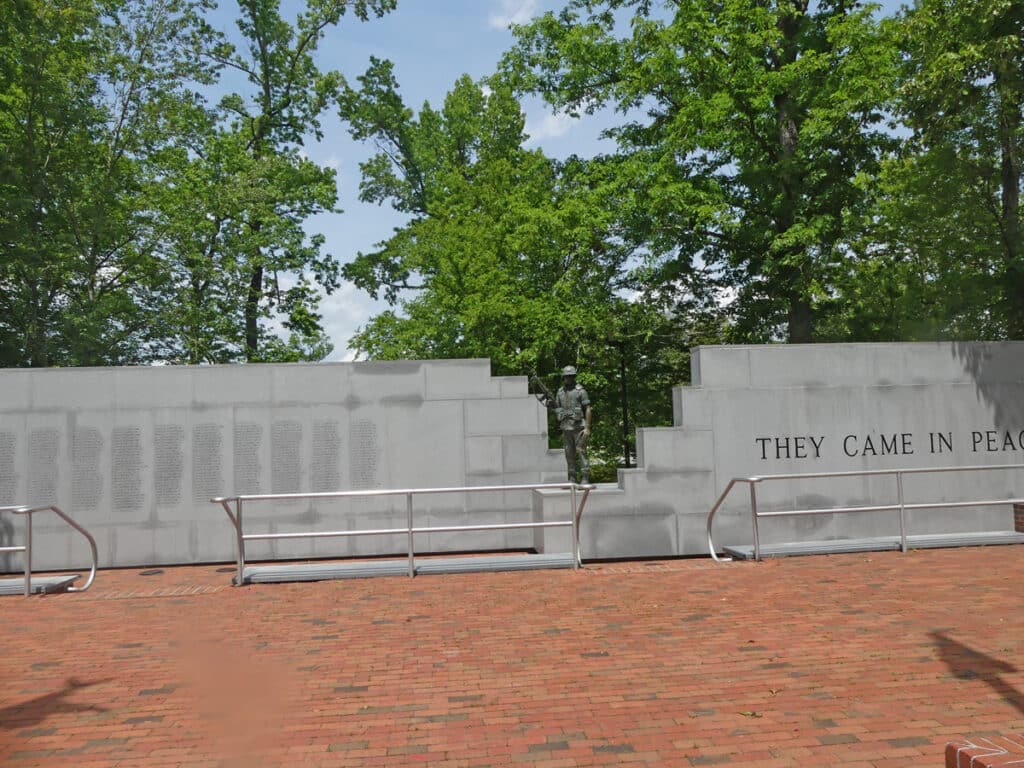
The design is unique. It shows a broken wall. And in the break a marine that stands ready. They put the words “peacekeepers” to show they were not part of any aggressive. Marines were just there to keep the peace. They completed the memorial in 1989 with the statue as the finishing touch. Abby Godwin who did the Vietnam Memorial at the at the state capital, created the statue.
The next monument, Montford Point Marine Memorial, tells the story so relevant today of how Black Marines earned a place in a corps that was reluctant to admit them. The Marine Corp did not want them training with the white marines despite President Roosevelt’s executive order 8802, issued on June 25, 1941, forbidding racial discrimination in the armed forces. They assigned them to a separate barracks several miles away. These Black marines had to build their own barracks. They were given an aircraft gun, and they decided they would become the most proficient anti-aircraft unit in the service. When they were sent into battle spread all over the Pacific, command used them as stevedores carrying ammunition to white marines. While the white divisions got the credit because they were up on the mountain fighting, down in the valley, it was bloody hand-to-hand combat. There was a pivotal moment when the Black Marines put down the ammunition boxes, picked up their rifles, and fought alongside their white comrades.
The monument’s three concentric circles represent the ripples of influence these marines created that changed our nation. An artillery cannon represents WWII weaponry that the US Marines used and trained with. At the center of the memorial is a bronze statue of a marine armed with a rifle. His ammo can is behind him, signifying his transition to a fighting infantry man from ammunition supplier. The artist angled the statue to represent the uphill struggle for equality that the Montford Point Marines overcame. They dedicated the memorial on July 29, 2016.
We moved on to the Vietnam Veterans Memorial. It’s the second-largest Vietnam Veterans Memorial in the nation, and one of only a few that lists all the names of the fallen. It features a walkway and bridge with French design, a glass wall etched with the names of those MIA, POW or dead, a dome, and a fountain. Its entry wall has medallions and flags representing all branches of the military, and they list the names of the fallen in chronological order. The glass wall is etched with the names of those who were missing in action, prisoners of war, or killed in action. The dome tops the memorial and is inscribed with the unofficial words from Taps. It was dedicated in 1997.
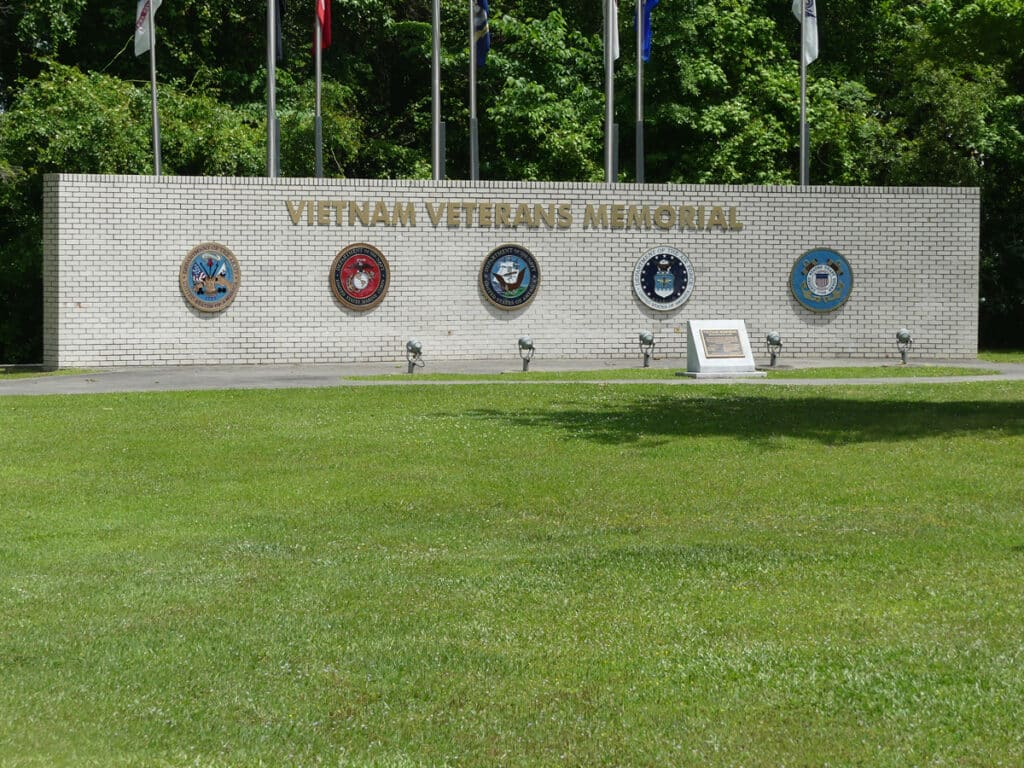
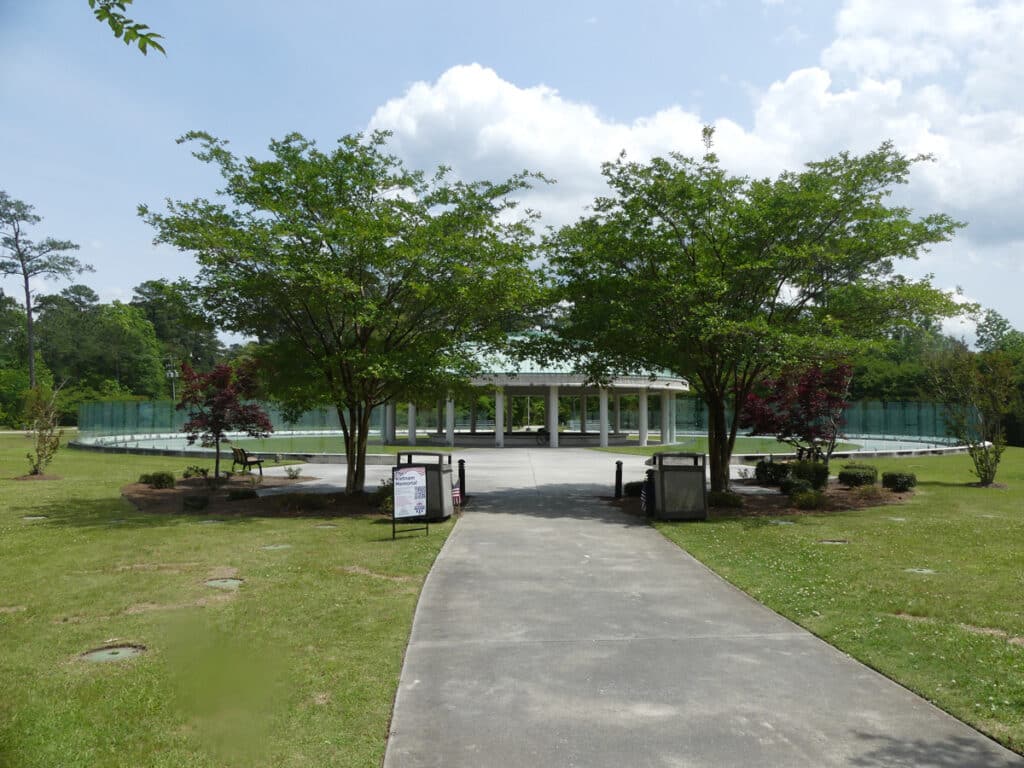
The 9/11 Memorial Beam from the World Trade Center was the first one out of New York on a firetruck after the bombing. It was brought here in 2003 to thank the marines who were the first into Afghanistan. Glenn Hargett told us the ironic story of John Chapman Chitura who had been in Beirut and housed in the bombed barracks. He was on his way back to the barracks from his duty post, but stopped to talk to a friend when the bomb went off. After his service term, he became a police officer in New York and then a fireman. On 9-11, he was one of the 343 firefighters who rushed int the World Trade Center and died that day.
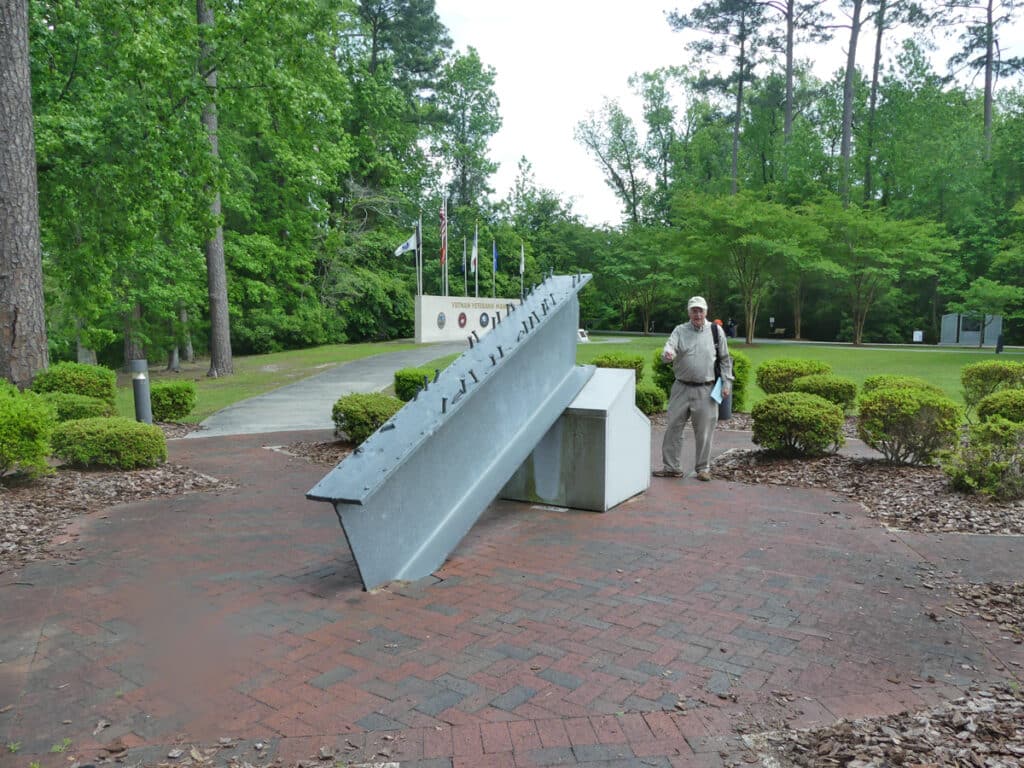
They built the Freedom Fountain in downtown Jacksonville after the first Gulf War. Its curved wall has medallions representing five armed services. Its red, white, and blue water jets represent each of the 50 states.
And they are still building more. Plans are underway for the Carolina Museum of the Marine to highlight the accomplishments of Carolina marines and sailors. There are already several memorial statues and monuments there, including one honoring Hospital Corpsman. Many of whom have died saving wounded comrades’ lives. The statue shows a corpsman covering a wounded marine with his own body.

With the acquisition of the 85,000 acres of land that became Camp Lejeune, the federal government assumed responsibility for moving the graves that were on base property. They found in approximately 134 identifiable family and church graveyards scattered throughout the reservation. They selected two locations for the reinterment. Since this was during segregation, white graves were reestablished at Montford Point alongside NC Hwy 24 while African American graves, were moved to a site on US 175 near Verona called Verona Loop National Cemetery. Both are maintained by Camp Lejeune. There’s an interesting side story about the cemeteries, some dating back to the early 1800s.
We visited both cemeteries. I was struck by the age of some stones in the Verona Loop one. One stone was for a Caroline Pearson, born Aug 16, 1826, died Jul 29 1926. I was thinking what had she seen during this eventful 100 years. When I googled “Carolina Pearson,” I was surprised to discover Caroline was a man. I found this story in Greensboro News & Record from 1990 describing Pearson. “Snead Ferry’s most famous ferryman, it appears, was Caroline Pearson, who was born about 1826 to parents who were Onslow County slaves, according to an article by D.A. Clement. In 1875, ‘Uncle’ Caroline was selected to run the ferry. He rowed it across the river with ‘enormous oars’ for nearly 20 years, despite the fact that he was nearly 50 when he began. He finally gave it up at the age of 67. And went to farming. He lived to be 100.”
What I would give to talk to Mr. Pearson today and hear his stories!
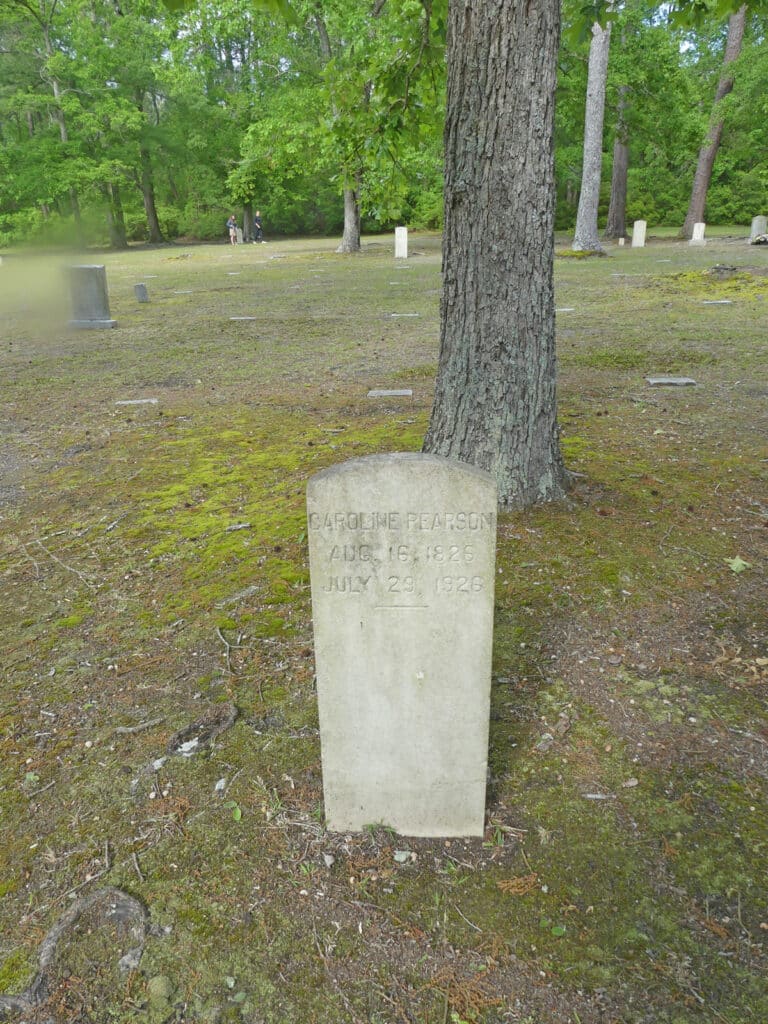
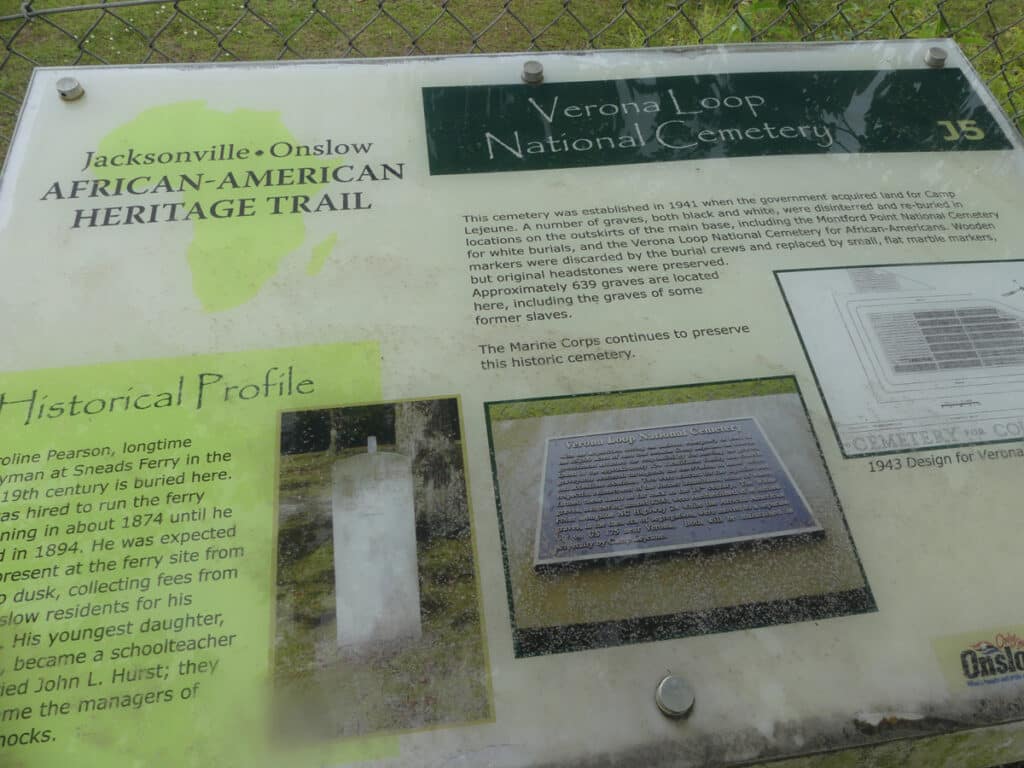
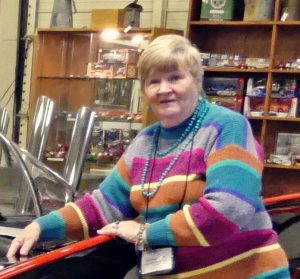
Kathleen Walls, former reporter for Union Sentinel in Blairsville, GA, is publisher/writer for American Roads and Global Highways. She is the author of several travel books including Georgia’s Ghostly Getaways, Finding Florida’s Phantoms, Hosts With Ghosts, and Wild About Florida series. Kathleen’s articles have appeared in Family Motor Coaching Association Magazine, Food Wine Travel Magazine, Weekender Extended, Travel World International, Tours4Mobile and others. She is a photographer with many of her original photographs appearing in her travel ezine, American Roads, as well as other publications. Her fiction includes Last Step, which was made into a feature movie of the same name by Forbes Productions, Kudzu, Under A Bloody Flag and Under A Black Flag.
PODCAST FEATURE
Listen to Kathleen’s interview talking about the American south.
